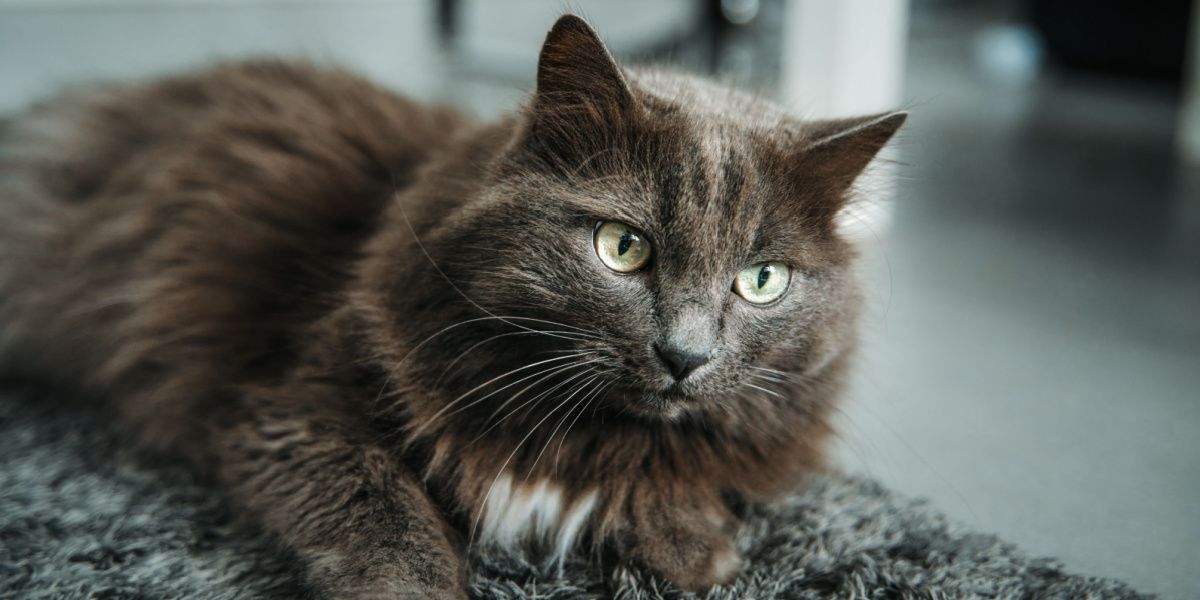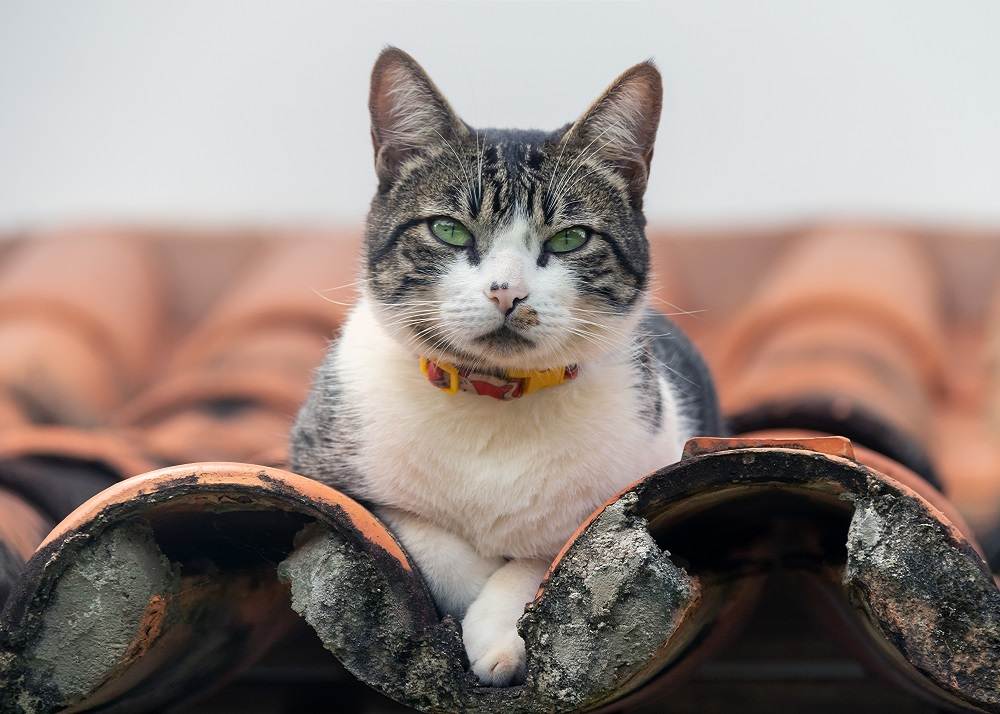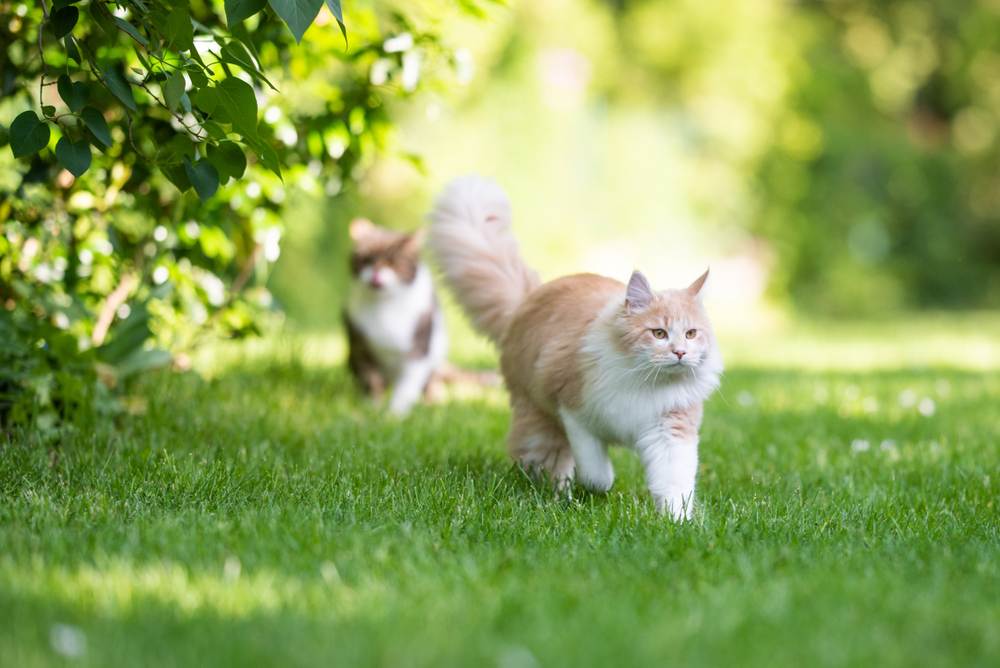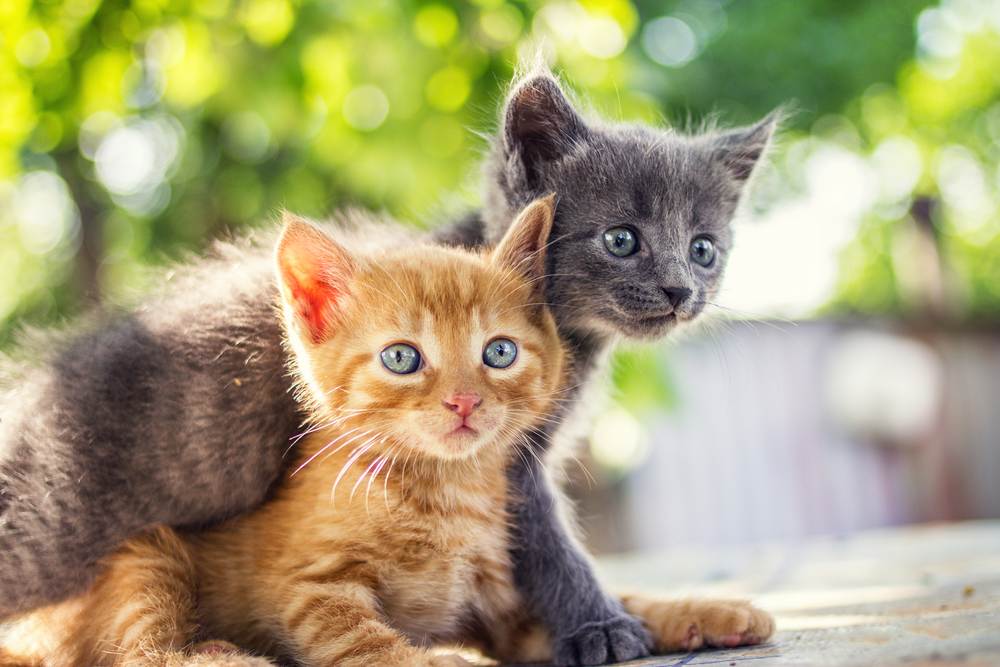
Shutterstock.com
Male cats are quite similar to female cats in many ways, but boys do have some interesting personality traits and physical differences. If you are a cat lover who has both male cats and female cats as pets, you might have noticed some unique characteristics about your male cat’s temperament, behavior, physical appearance, and more. Read on for 14 fascinating facts about male cats.
1. Male Cats Are More Likely to Be Left-Pawed
Like humans are right-handed or left-handed, cats can be right-pawed or left-pawed. According to one study, about 75% of cats show a preference for using one paw more than the other.
And as it turns out, 52.3% of male cats preferred using their left paw, while 52% of female cats preferred using their right paw. Overall, fewer cats show a preference for a dominant paw compared to humans. (99% of humans have a strong preference for being right-handed or left-handed.)
2. Most Orange Tabby Cats Are Male
Because the genes responsible for color are sex-linked, orange cats are more likely to be male than female. The gene responsible for the color orange is carried by the X chromosome. Black is also contained within the X chromosome. Female cats always have two X chromosomes (XX) and males always have one X and one Y (XY).
For a female cat to be orange, she must have the genes for orange in both her X chromosomes. However, the gene for black is more common in cats than the gene for orange, so it’s rare for females to inherit the two orange genes that they need to be orange. But male cats only need one orange X gene to be orange. For this reason, about 80% of all orange tabby cats are male.
3. Male Cats Are Almost Never Calico or Tortoiseshell

Shutterstock.com
The same color genetics come into play for the calico and tortoiseshell color patterns. Almost all calico or tortoiseshell cats are female. To be calico or tortoiseshell, a cat must have two X chromosomes (XX) that each carry the different alleles that create the calico or tortoiseshell color pattern. Two XX chromosomes make the cat female. A cat with one X and one Y chromosome (XY) is male, so they theoretically can never display these colors.
However, rarely, a male cat is born calico or tortoiseshell. This means the cat has an extra chromosome that causes a condition called Klinefelter’s syndrome. Male calico and tortoiseshell cats have three chromosomes (XXY) and are always sterile. Cats with Klinefelter’s syndrome might suffer additional health issues, including cognitive and development issues, increased risk of broken bones, and reduced life span.
4. Male Cats Have Shorter Life Spans Than Female Cats
One study found that the average life span of male cats was 13 years, which was two years less than female cats (15 years). This shorter life expectancy is likely due to the fact that intact males are more inclined to have wanderlust in search of fertile females, which can put them into dangerous situations with cars, dogs, and wildlife.
Cats that roam outside are also more exposed to deadly diseases like feline leukemia, feline infectious peritonitis, and rabies. Want more years with your male cat? Consider neutering him. Neutering male cats increases their life expectancy—neutered male cats live about 62% longer than unneutered male cats.
5. Unneutered Male Cats Are Called Tomcats
Intact male cats are often called tomcats. If the word sounds old-fashioned, it’s probably because it comes from a pretty old book. Although no one knows for certain, it’s possible that the term came about because of a popular children’s book called The Life and Adventures of a Cat, which was published in 1760.
In the book, the main character is named Tom the Cat, and it’s likely that over the years, people simply began referring to any male cat as a “Tom” or “tomcat,” and it stuck.
6. Male Cats Have Nipples
Male cats don’t have to nurse kittens, so you might be surprised to discover that all male cats have nipples. Like female cats, male cats have four to 10 nipples arranged in pairs along their bellies. A male cat’s small, undeveloped nipples are vestigial—they don’t produce milk or serve any other purpose. If it seems strange, remember that most male mammals have vestigial nipples—including humans!
7. Male Cats Have Barbs on Their Penises
If you have ever heard the screaming (also known as caterwauling) that arises when cats are mating, the process might sound painful. In fact, it very likely is painful for the female cat. This is because the male cat’s penis is barbed with tiny, keratinized spines, which probably cause pain and discomfort for the female during mating.
The purpose of the barbs is two-fold. First, they hold the penis in place so the act can be completed. They also are thought to trigger ovulation in the female when they scrape the sides of the female cat’s vagina during withdrawal. Nature certainly has interesting ways of ensuring the survival of a species.
8. Male Cats Have Larger Territories than Female Cats

Shutterstock.com
Male cats wander farther than female cats, whether we’re talking about free-roaming feral cats, owned outdoor cats, or indoor cats that go outside. On average, male cats have territories that are three times larger than female cats, but some males might have territories 10 times larger than females.
9. Male Cats Are More Likely to Urine-Spray than Females
Urine spraying is a normal feline instinct that can be problematic when cats share their lives with humans. Urine spraying involves a standing cat depositing urine on vertical surfaces like walls, couches, or trees.
Urine spraying is more common in unneutered males because it’s related to territorial and mating behavior. In most cases, neutering dramatically decreases urine spraying. Even so, neutered males are twice as likely to spray as spayed females. Some intact males might also scratch to mark territory more than females or neutered males. Providing plenty of scratching posts throughout your house can help contain the scratching to appropriate places.
10. Intact Male Cat Pee Smells the Worst
Whether male or female, cat urine generally has a strong odor. However, the urine of unneutered male cats by far has the most pungent and offensive scent. This is due to high levels of testosterone and other hormones. Neutering is the best way to lessen the smell of your male cat’s pee.
11. Some Intact Male Cats Have Tomcat Jowls (Cheeks)
When male cats are not neutered, their higher levels of testosterone often lead their bodies to develop some features unique to males. One of these features is large, round, pronounced cheeks, known as tomcat jowls. These jowls let female cats know that the male is ready to mate and can also protect the cat during catfights with other males.
12. Intact Male Cats Have Bigger Heads than Female Cats
The higher levels of testosterone found in unneutered male cats lead to larger, more muscular bodies. But something most people don’t know is intact male cats can have noticeably larger heads compared to females and neutered males.
The skull itself is larger and thicker, and pronounced cheeks, whisker pads, and snout add to an intact male cat’s overall head largeness. In some breeds, the size difference between the male and female specimens can be quite significant, especially in intact males.
13. It’s Cheaper to Neuter Male Cats than to Spay Female Cats
Neutering male cats is relatively quick and easy, since the veterinarian does not have to enter the body cavity to remove the testicles. The procedure requires less anesthesia, surgical tools, and time, so it usually costs much less than a spay surgery for a female, which is a more invasive abdominal surgery.
Neutering your male cat reduces behavioral issues like urine spraying, eliminates the chance of testicular cancer, and lowers the risk of other hormonally linked diseases. Male cats tend to recover from the neuter quickly and usually don’t require stitches.
14. Some Male Kittens Have Undescended Testicles

Shutterstock.com
A medical condition called cryptorchidism occurs when one or both of a male cat’s testicles do not descend into the scrotum as they should. These boy kittens might appear to have a penis with no testicles, but the testicles are there—just inside the cat’s body. Sometimes one or both testicles ultimately descend on their own, but in some cases, they never come down.
A cat with one undescended testicle will be fertile but should not be bred since the condition can be hereditary. Neutering is recommended for all male cats with cryptorchidism because undescended testicles are at a higher risk of developing cancer. The neuter procedure is more involved and costly for cryptorchid cats because it requires the veterinarian to make one or more incisions to extract the testicle(s).







